Promotion on Amazon🧝 How to Promote Products Within the Platform Effectively
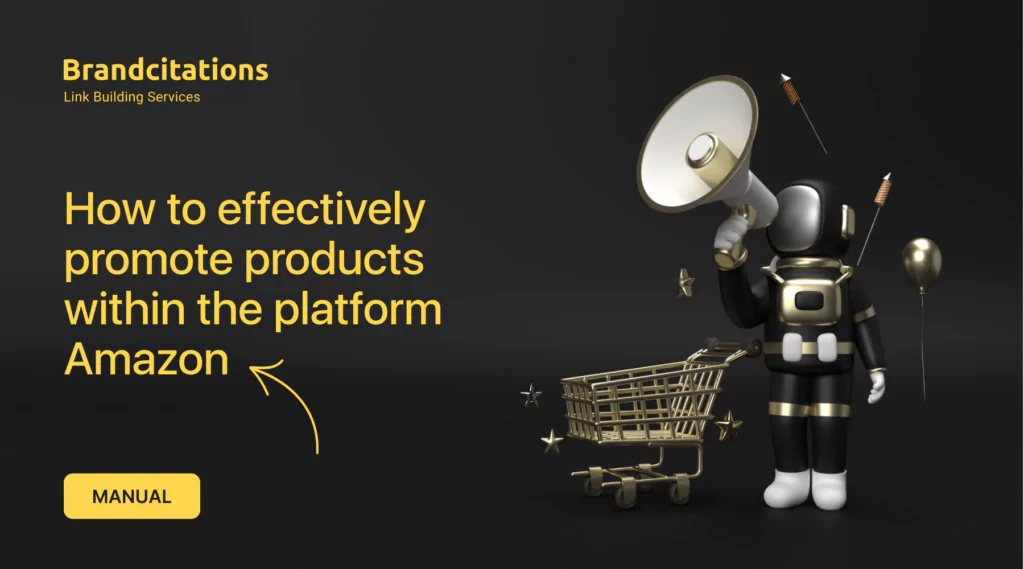
Many e-commerce platforms worldwide allow users to sell products using built-in functionality. Entrepreneurs don’t need to create and develop their online stores, optimize them, or promote them in search engines. This approach is advantageous if your products are competitive.
From a return-on-investment perspective, it is more profitable to bring your products to international markets. Nowadays, people are more inclined to spend money online. The vast majority of American and European families buy goods in bulk. As a result, there is a significant number of wholesale stores, and the e-commerce niche is well-developed overall.
The largest e-commerce platform in the world is Amazon, with monthly traffic exceeding 2.8 billion visitors. It dominates Google’s TOP results for nearly all e-commerce queries.
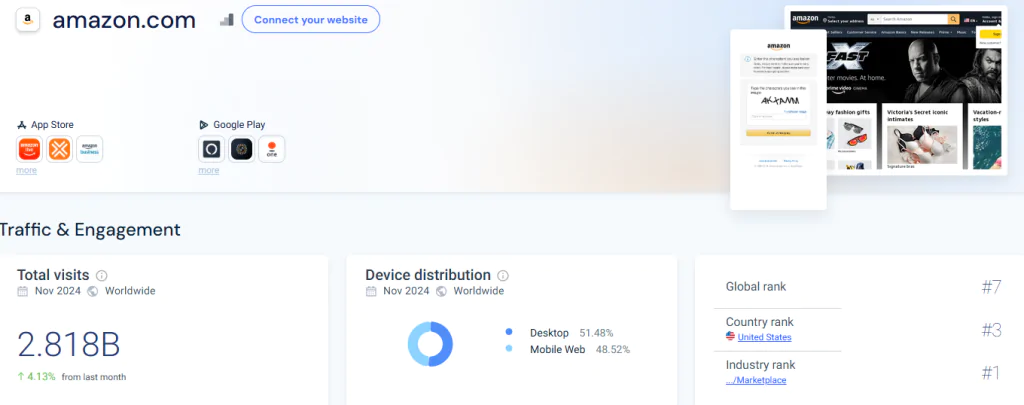
In this article, I will discuss how to promote online stores and products on Amazon. I will cover the platform’s unique features, how to design and optimize your store, and provide tips for offsite promotion. Additionally, I’ll share effective link-building techniques to boost brand awareness and attract a motivated target audience when promoting on Amazon.
Promotion on Amazon: The Platform’s Exemplary Search Algorithm
When considering what sets Amazon apart from its competitors, the first thing that comes to mind is its advanced search system, which selects products with maximum accuracy based on user queries.
Even Google acknowledges that Amazon receives three times more product search queries than they do. Achieving this level of success required Amazon’s specialists to spend years developing and refining their internal search system.
What is Amazon’s Search Algorithm?
The exemplary Amazon search algorithm was developed by one of its subsidiaries. The outcome of substantial financial investments was the A9 system. Its key advantage lies in the fact that A9 begins working long before a user types their query into the search bar.
First and foremost, the system indexes all the content from internal online stores and their products, then analyzes the characteristics and traffic patterns. Based on the data collected, it generates a set of offers for the customer.
Result: perfectly crafted suggestions in the search bar when entering a query. A9 will assist the site visitor not only in deciding on the purchase of the desired product, but also offer a dozen fresh ideas for potential purchases.
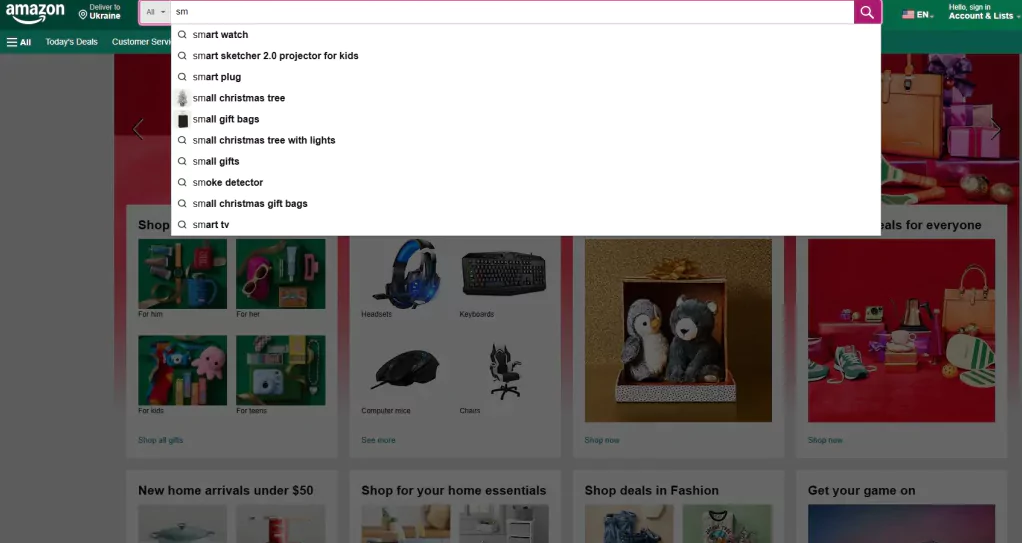
Regarding the stores themselves, A9 works as follows: it instantly matches customer queries with the most relevant products in the catalog. The algorithm relies on a single metric — revenue from the first click!
Based on this, the most effective way to generate sales is by focusing on product listings when generating organic search results.
Example: If a buyer enters the query «gaming keyboard» and purchases a product on the first page of results that contains the key phrase in its title or description, the store’s ranking increases. Meanwhile, products with key phrases like «wireless keyboard», «smart keyboard», and others remain in their current positions.
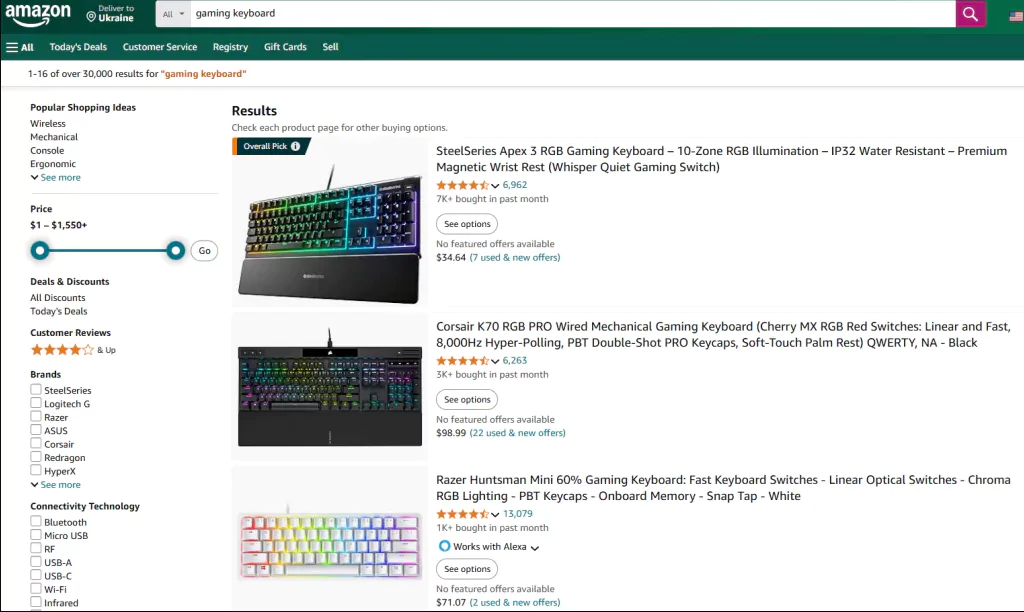
Conclusion: Promotion should begin with a thorough collection of keywords and SEO optimization of all content in the store.
P.S. In September 2019, The Wall Street Journal (one of the most influential media outlets in the United States) reported that A9 had been secretly modified to boost sales of products that generate the most profit for Amazon, rather than those that best meet user needs. You can read the article here.
Internal Optimization and Refinement of the Amazon Store
Search is the primary way to find desired products. Most potential buyers begin their search directly on Amazon, bypassing Google. And this is not just about users who come with the intent to make a purchase. It is mainly about consumers who appreciate the convenience of «one-click» checkout.
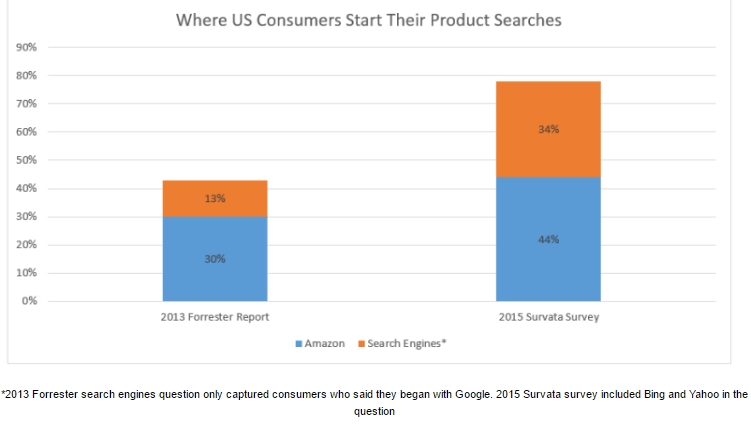
The first thing you need to do is compile or complete a list of the most relevant keywords for your products.
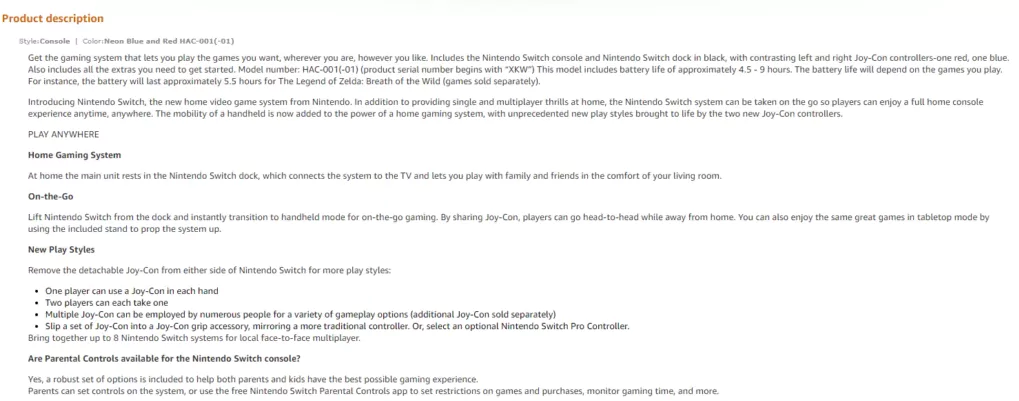
But don’t rush to insert them into your texts thoughtlessly. Amazon’s algorithms don’t rank products with spammy descriptions well. Aim to create concise content that thoroughly describes the product items.
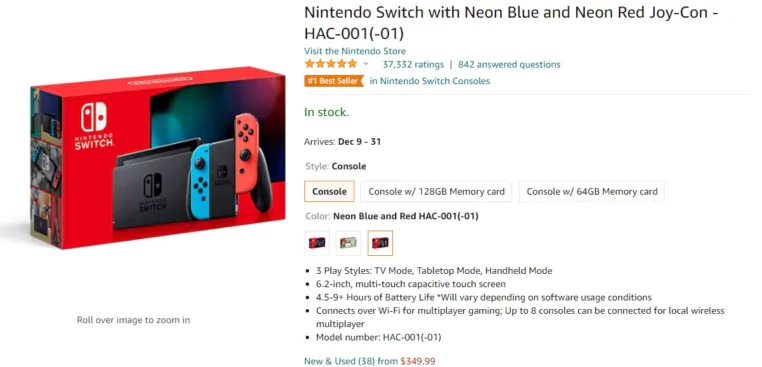
What Else Should You Consider When Creating a Product Card
- Do not use more than one keyword phrase in the title.
- Do not include the competitor’s brand name in the description.
- Avoid providing false information.
- Do not overuse keywords in the text.
- Do not place punctuation between keywords in a phrase.
- Do not misspell keywords, synonyms, or similar spellings.
Remember that the product card is primarily written for the buyer, and only secondarily for the Amazon algorithm.
The selected keywords can be included in:
- product name
- key points on the first screen
- detailed product description
- image captions and Alt text
- search terms (when editing the product description in the Seller Central section)
- product video title
- question-and-answer section
- product reviews
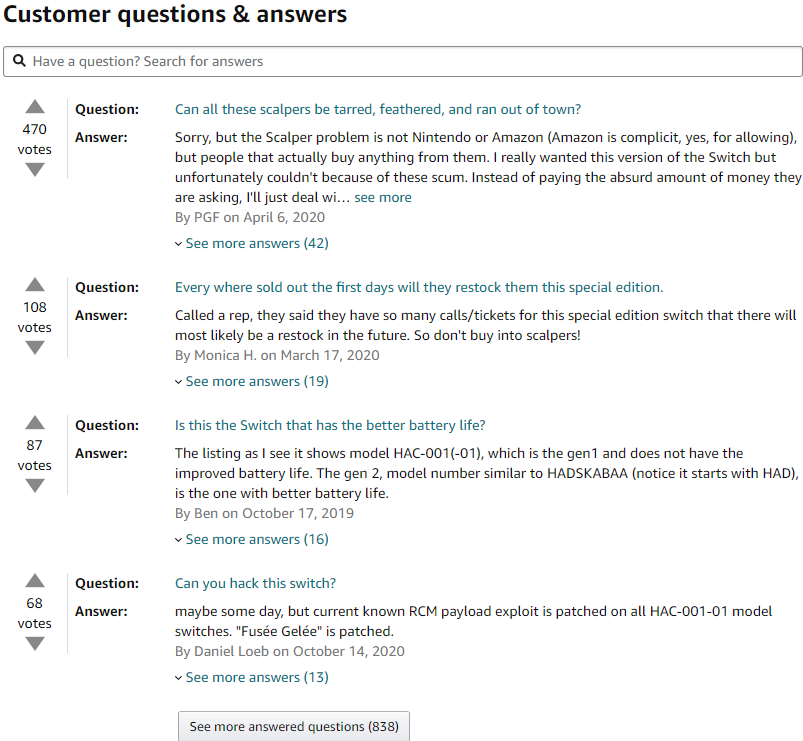
What data should be included on the product card
- Name
- Current price (discount/special offer)
- Photos of the product from all angles
- Video review of the product
- Brief description of technical/physical features
- Product description in a table format
- Detailed product description in text
In other words, you should create a product card that fully captures the buyer’s interest. This speeds up the decision-making process. And considering that B2C businesses operate «on emotions», it’s an excellent way to convince the buyer of the reliability of your store and the quality of your product.
What Else Can Help Your Store Boost «Emotional» Sales
There are several established rules for designing a product card that will encourage the buyer to make the right decision.
- The price should not end in «0». The human brain tends to round off any number that doesn’t end in «0». For a visitor, a price of $299 feels more attractive than $300. That’s why it’s very difficult (almost impossible) to find a round price for a product on Amazon.
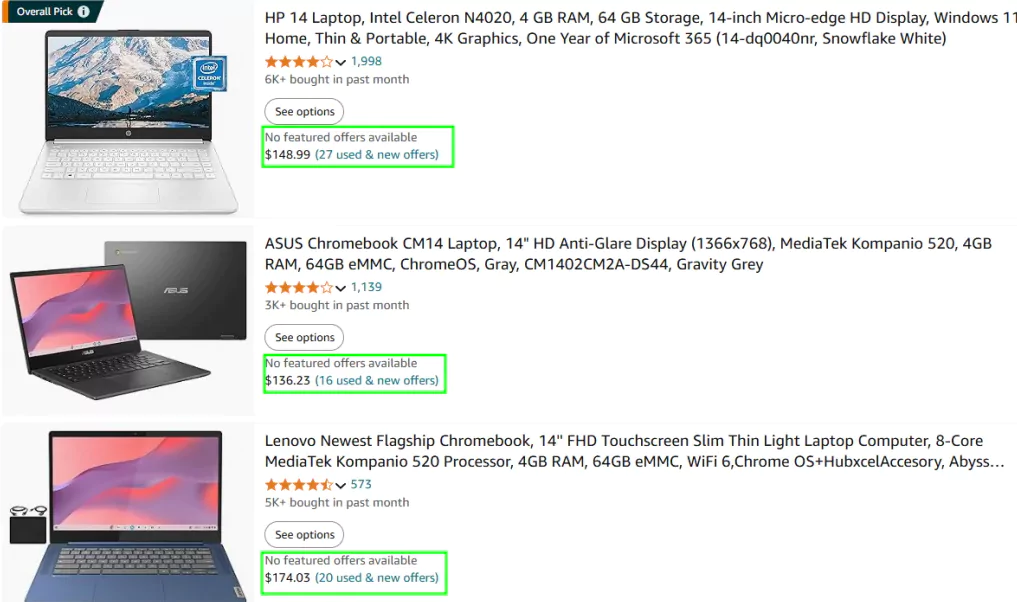
- Always indicate the amount of savings when a discount is available. If you have a promotion and offer even a 5% discount, make sure to highlight it. Be sure to display the original price clearly (even if it’s crossed out) and don’t forget to format the Sale correctly.
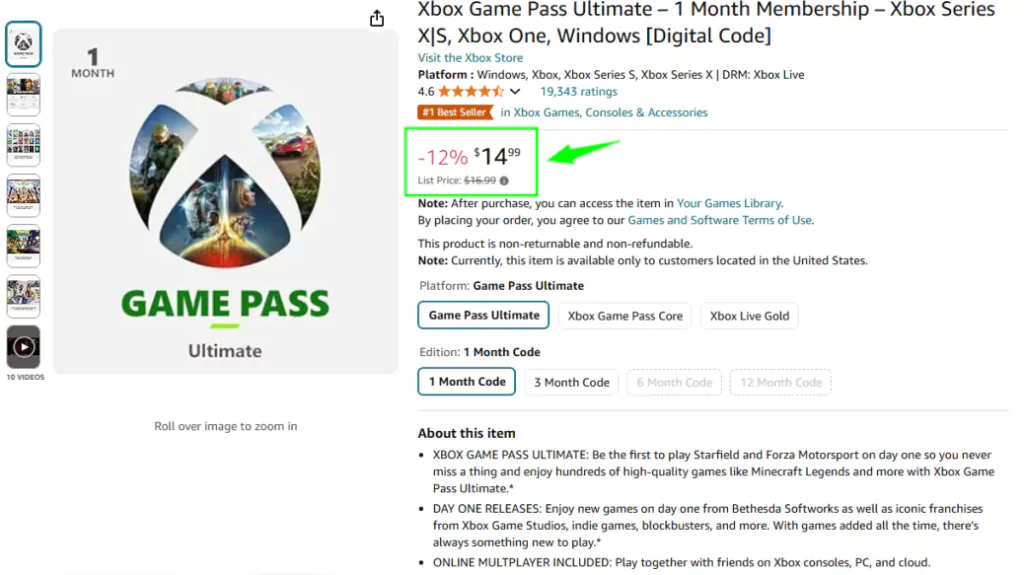
- Create a sense of urgency. Indicate the duration of the promotion down to the minute, and the shorter the period, the more it will motivate the buyer to make a purchase.
- Increase the number of reviews on your product page, ideally with photos. How to do this? Simply offer your customers a bonus for a detailed review. This could be a discount, but it’s even better to offer an additional product. If it’s a phone, consider giving a charging cable, case, or screen protector.
It’s not very expensive, but a few dozen positive reviews about your store and products will build trust with your audience and influence purchasing decisions. I think most of us check reviews before choosing a store or brand/model. 🙂
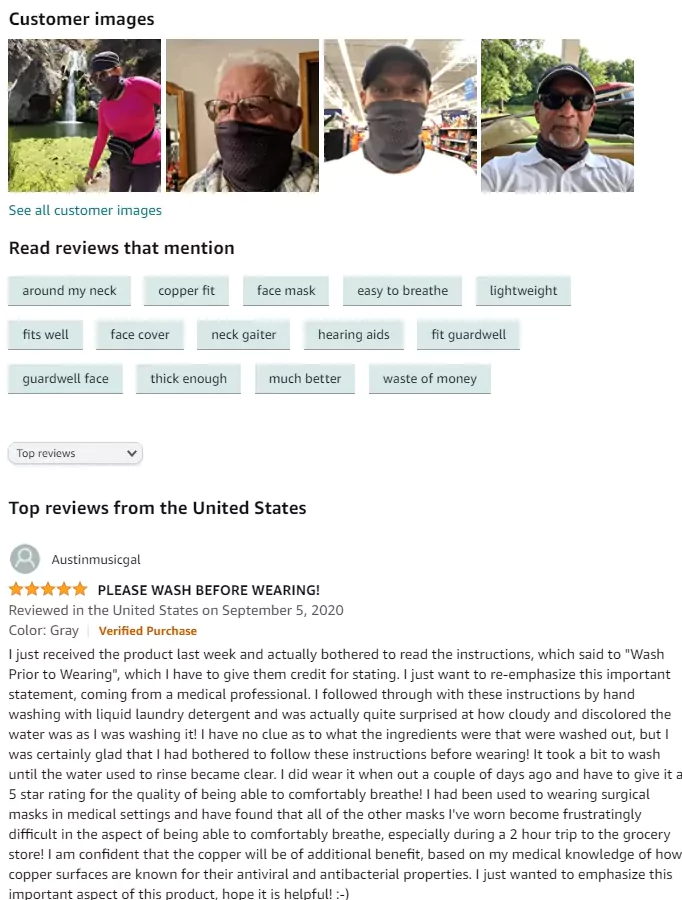
- Create artificial scarcity. This method is similar to creating urgency. The idea is to show the buyer that the product at this price is running out. This will significantly accelerate the decision-making process.
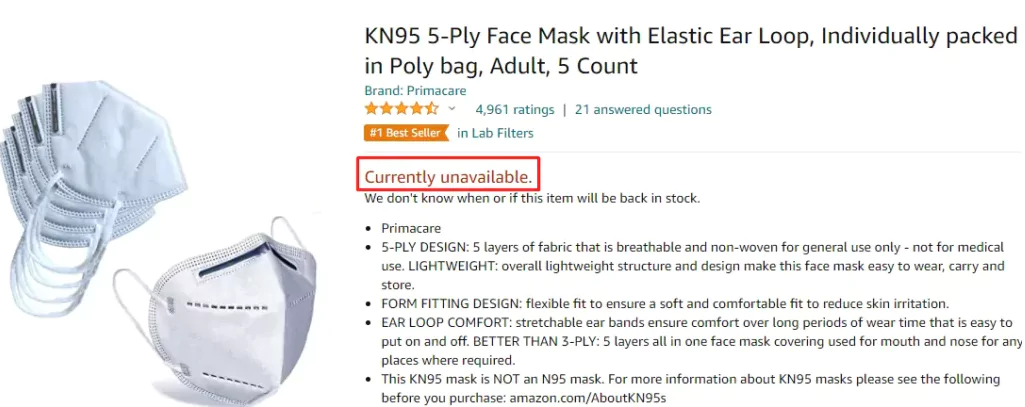
How to Promote Products on Amazon Using Link Building
We’ve covered internal optimization and improvements. Now, let’s define an external promotion strategy (beyond the platform).
When promoting a product on Amazon, there is no way to analyze the link profile of competitors, as they do not have separate websites. Additionally, store owners are not focused on building a link profile. However, this does not mean that links are unnecessary. Here are some advantages of using link building for Amazon:
- Attracting a motivated target audience to your product cards
- Increasing brand awareness of your store
- Boosting trust in your store among users
- Creating a positive perception of your brand
This all ultimately leads to sales. But what else do we need from an Amazon store?
How do we build a promotion strategy when our goal isn’t SEO metrics? When promoting a store on Amazon, you must understand that our primary focus is the buyer and their trust. Therefore, we implement the following methods.
Forum Links for Amazon
Crowd marketing is one of the key methods for promoting stores on Amazon. It effectively addresses all tasks. Creating positive comments about your store/products on forums, Q&A sites, under feature articles on blogs, and in other communities should be your primary focus. For B2C businesses, comments are essential.
What to consider?
- Choose relevant discussions, not just thematic platforms. After all, you’re targeting a motivated audience, right?
- Always complete the author profile on the platform, include all necessary information, and wait at least 2 weeks before posting your first targeted comment.
- Post more than just links. Don’t shy away from neutral comments. We’re not posting only for the sake of links.
- Write simply and informatively. Stick to a conversational tone when writing posts.
- Use visuals. A product photo or video will blend perfectly into the context.
And remember: you’re writing for people. Aim to be helpful. Identify the pain points of the discussion participants and address them with your comment.
How to Promote Products on Amazon Using Guest Posts
Today, there are many blogs and online publications where you can prepare useful content about your products. The type of store doesn’t matter at all: whether it’s cameras, office equipment, or teddy bears. You can publish a dozen helpful articles.
What to consider?
- Write simply, clearly, and in a structured manner.
- Format the text: break it into small paragraphs, use bullet points, quotes, and bold text.
- Always explain complex things in simple language.
- Write from a specific person’s perspective, not from a brand’s.
- Try to incorporate multimedia — screenshots, photos, or video reviews.
- Support your claims with official sources.
I recommend not just describing products and their benefits. Create collections of life hacks using the products and offer more ideas for their application.
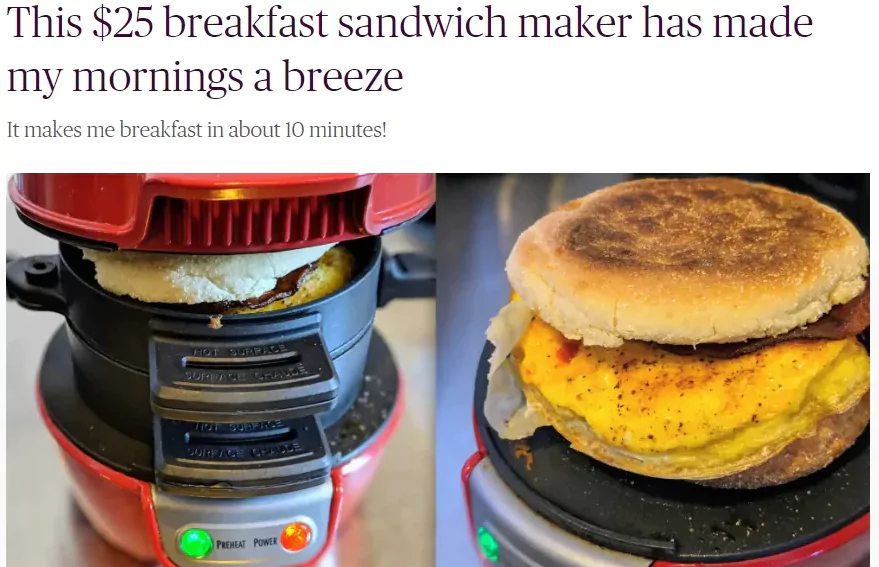
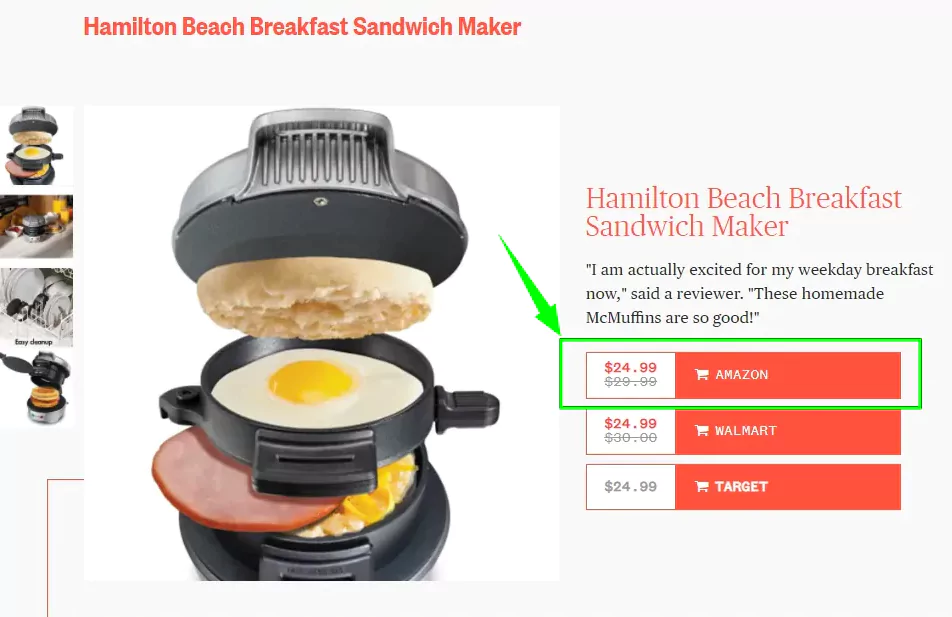
Social Networks for Promotion on Amazon
Social networks are very popular worldwide. In addition to Facebook, Instagram, and TikTok, audiences actively use LinkedIn, X, Quora, Reddit, Pinterest, and others. Just imagine how many free links you can add!
What to consider?
- A completed profile
- The account is more than two weeks old
- There are posts in the feed
It’s as simple as that!
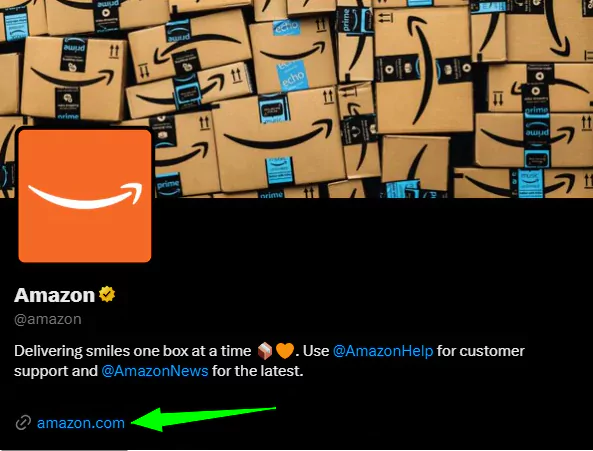
Promotion on Amazon through Outreach
Another method of link promotion for products on Amazon, which will allow you to acquire links on high-quality platforms with good traffic. This also partially applies to posting guest materials.
The idea is to place your store/individual products in collections, articles, rankings, under videos, and wherever possible, by reaching out to the owner.
The operation scheme is simple:
- Choose the platform where you would like to be featured.
- Determine the most concise method of placement.
- Look for the contact details of the platform owner or representative.
- Send a letter requesting placement (since «link for link» barter is impossible, you can offer money or products).
- Agree on terms.
- Profit.
Important. Don’t use your work email for outreach. It may get blocked.
One type of outreach work is Link Insertion (Niche Edits), a link-building method that involves placing a link on a page that already has authority, traffic, and ranks in Google for relevant search queries. These exclusive links will significantly accelerate your promotion.
Conclusions
Promoting on Amazon is a complex process that requires constant attention and adaptation to changing conditions. However, there are key rules, compliance with which significantly increases the chances of success. To summarize, here are the basic rules for promoting on Amazon:
- In-depth analysis of the niche and competitors. Before you start selling on Amazon, you need to thoroughly research the market. Determine what products are in demand, who your main competitors are, what their prices are, reviews, and strategies. Use market analysis tools such as Jungle Scout, Helium 10, or Viral Launch.
- Product listing optimization. A listing is the calling card of your product. It should be as informative, attractive, and optimized for search queries as possible. Please pay attention to the following elements:
- Title. Brief yet informative, containing keywords.
- Description. A detailed description of the product, highlighting its advantages and features.
- Bulleted lists. Concise and impactful descriptions of the key characteristics of the product.
- Keywords. Relevant search queries that buyers use to find products.
- Images. High-quality product photographs from different angles.
- Competitive price. Price plays a crucial role in the purchasing decision. Set a competitive price. The lowest price isn’t always the best strategy; it’s important to find a balance between price and profit.
- Fulfillment by Amazon (FBA). Using FBA allows Amazon to store, package, and ship your products. This significantly simplifies logistics and boosts customer confidence. Products sold through FBA are often given priority in search results and are eligible for Amazon Prime.
- Customer reviews. Reviews play a significant role in shaping a product’s reputation and influencing purchasing decisions. Encourage customers to leave reviews by offering a quality product, excellent service, and possibly some attractive bonuses.
- Advertising on Amazon. Amazon offers various advertising tools such as Sponsored Products, Sponsored Brands, and Sponsored Display. Advertising can increase the visibility of a product and attract more buyers. It’s essential to set up advertising campaigns correctly and monitor their performance.
- Inventory management. Keep an adequate inventory in your Amazon warehouse to avoid stockouts and lost sales.
- Quality customer service. Prompt and professional resolution of customer issues helps build a positive reputation and increases loyalty.
- Branding. Registering your brand on Amazon offers additional opportunities to protect your brand and create a more compelling listing.
- Ongoing analysis and optimization. The Amazon marketplace is constantly evolving, so it’s crucial to regularly assess your performance, track changes in Amazon’s algorithms, and optimize your promotional strategy.
Following these rules will help you effectively promote products on Amazon and achieve significant results. Remember, success on Amazon requires time, effort, and continuous learning.
Don’t know where to buy backlinks to promote your store on Amazon? Pay attention to the best link building service’s agency Brandcitations. For over 12 years, we have been promoting our clients’ projects in such languages as: English, Spanish, German, Italian, Polish, and French. We offer SEO link building packages and backlinks from forums + Q/A websites, links from social profiles and Local Directories, buy backlinks from guest posts and Premium niche edits.
Read Digital marketing case studies Brandcitations and Reviews of Brandcitations to learn more about the effectiveness of our link building strategies.




